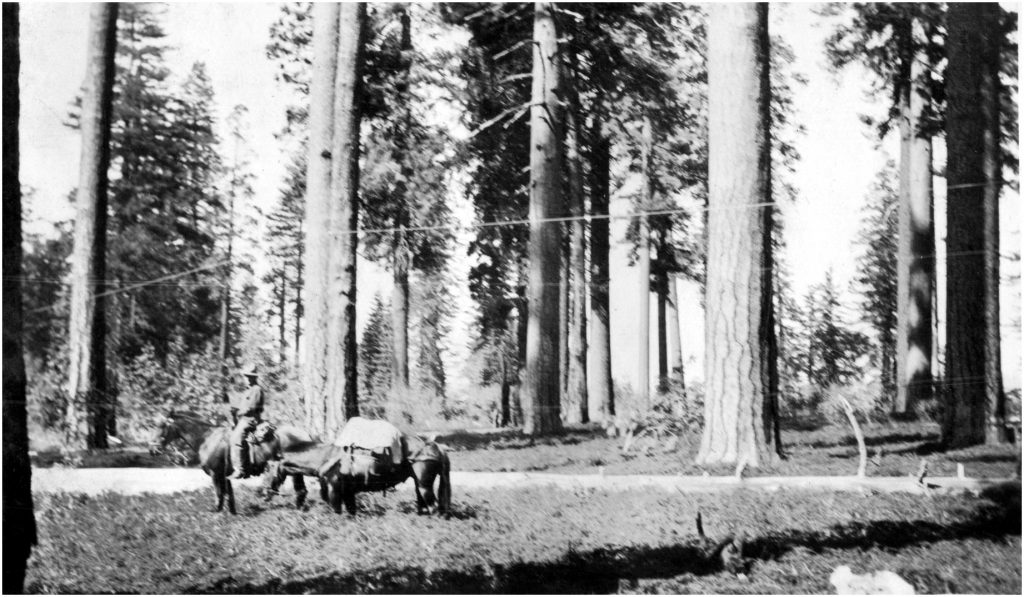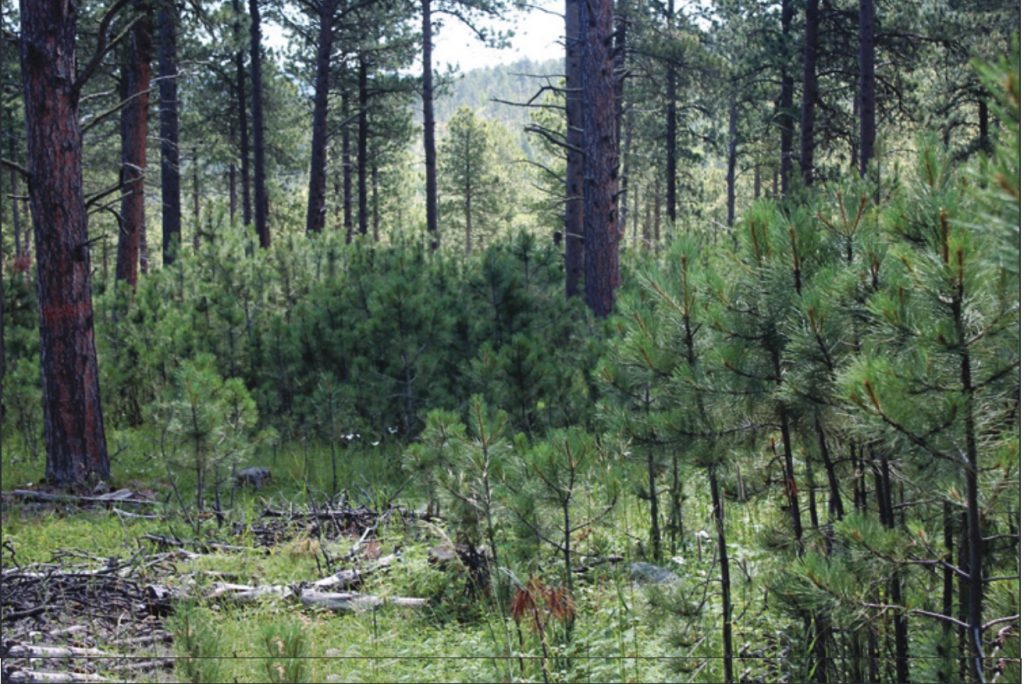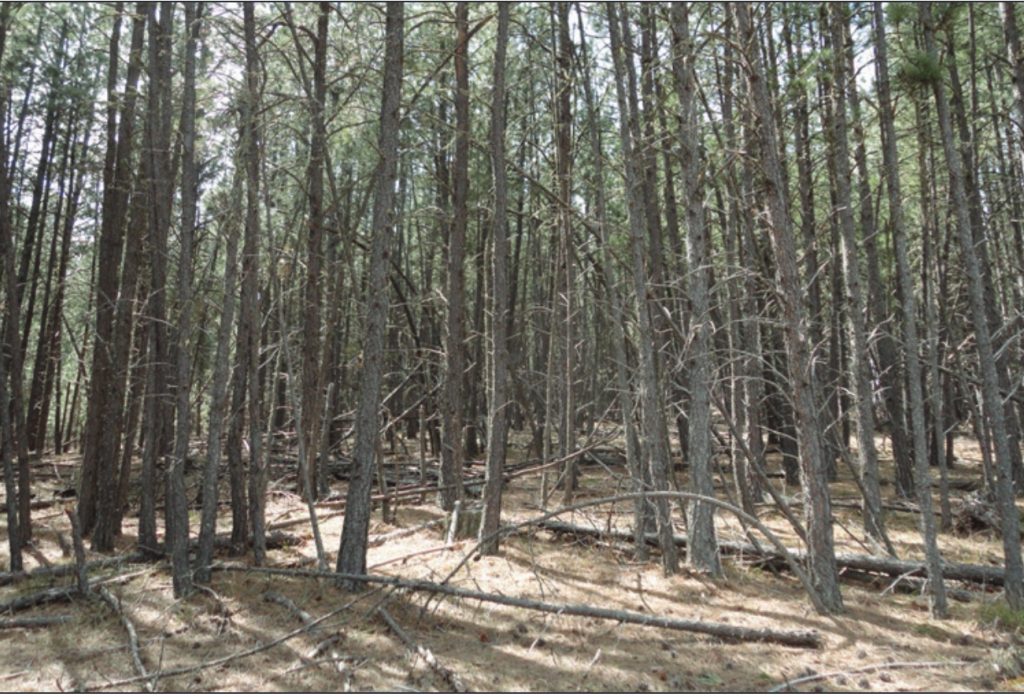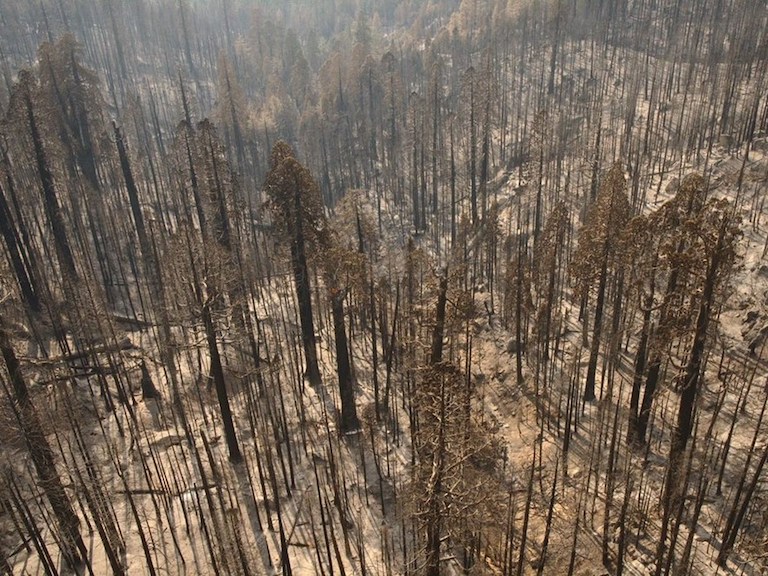Note: The summarizing introduction in italics, below, appears at the beginning of three separate pages, each of which reconsiders an example of human efforts to mitigate a natural hazard. Once you’ve read it, you can skip directly to the main text on subsequent pages.
Understanding that ecosystems are complex systems, rather than mechanistic ones operating via linear cause-and-effect, dramatically changes how we perceive Western culture’s strategies to mitigate natural disasters. McPhee’s Laws provide a powerful low-jargon way to think about the situations described on these pages. Resilience ecology offers conceptual language — robustness-fragility trade-off (RFTO) — that often seems more rigorous and legitimate to people in Western culture. It also adds a human-impact component that McPhee addressed more in terms of conflicting stakeholder demands.
Wildfires in many kinds of habitats have increased in size, burn severity, and frequency over the past few decades (Gillson et al 2019). Current attempts to prevent them include mechanical reduction of forest fuel loads by hand-thinning (Sullivan and Chediak 2021), and increased logging that the timber industry insists also reduces fuel loads (Fears and Eilperin 2019). But the most wide-spread and longest-running form of wildfire mitigation in forests has been active fire suppression by spotting and extinguishing wildfires as quickly as possible. By the late 1930s, a network of more than 5,000 fire lookout towers had been built in US national forests. Over the last few decades, wildfires spotting has been carried out more via infrared satellite detection systems and human airplane or helicopter pilots armed with the GPS locations of recent lightning strikes.
(1) By becoming robust to a particular set of disturbances, complex systems necessarily become more sensitive to disturbances outside that set. Fragility that emerges from RFTO is dangerous because its presence is usually not visible until it’s revealed through unexpected failures (Ishtiaque et al 2017).
We are already seeing the fragility emerge from forests heavily managed to reduce wildfires. In most forests, a fairly regular cycle of medium- to low-intensity wildfire normally clears out understory plants and dense seedlings, and singes the lowermost branches off trees so they cannot serve as “ladder fuels” that permit fire to move more destructively through the crowns of the trees. Many forest plants are, further, adapted to wildfire. Some, such as sequoias, even require a burn for seed release or germination (DellaSala et al 2006, Gillson et al 2019). Starting in the 1950s, intensive management of forests to suppress wildfire and protect timber resources for commercial harvest became wide-spread, and a network of forestry roads was developed to provide access to previously unmanaged areas and facilitate both logging and wildfire-fighting. These management practices resulted in forests with significantly higher fuel loads — denser stands of younger and smaller trees as well as more woody undergrowth. Take a look for yourself. (There are four images below, and then a little more text past that.)




More severe burns that are hotter, bigger, and more intense have emerged from the managed forest ecosystems, and trees suffer higher mortality from both wildfires and insect infestations as part of increased system fragility (DellaSala and Frost 2001:3). Burns were less frequent and quickly extinguished in the short-term period when fire suppression first engineered forest robustness, but in the long term the system has displayed fragility in its vulnerability to fires that are exponentially worse than they were before forests were managed. We might think the solution to these massive wildfires that kill even fire-adapted trees like giant sequoias is to double-down on wildfire prevention efforts that “protect” the trees (Weather Channel 2021). But the unusually dense stands of trees produced by fire suppression not only create more severe burns, they deplete the local water source when living and, as water pressure drops in the tree tissues, the trees succumb to insect infestations they’d normally be able to resist (Pacific Southwest Research Station 2018). So either way, the trees are dying because of fire suppression.
“Fixing” a forest after disturbance by salvage logging “unsightly” dead trees and then planting seeds or seedlings compounds the initial damage that made the forest more fragile to begin with, and makes trees even more vulnerable to mortality outcomes (DellaSala et al 2006, Gillson et al 2019). Further, decades of research have thoroughly documented the fact that when forests are thinned to try to undo the damage that fire suppression has done, it’s the small-diameter trees — saplings and dog-hair thickets — that should be removed. Larger and more mature trees that are naturally more resistant to fire and that keep fires on the ground rather than in the crowns of trees should be left growing in place. Timber companies, however, insist that the more severe burn regimes of contemporary forests are primarily due to their not having been logged. They actively promote lumbering as an important means of controlling massive fires and thereby protecting both the public and the environment, but the type of lumbering they do removes specifically the larger trees that are more economically profitable and better fit their sawmill set-ups, and leave behind saplings and dog-hair thickets. Despite forest service efforts to promote the harvest of small-diameter trees (LeVan Green and Livingston 2001) in ways that could make forest thinning economically feasible, that’s not what’s happening. Drought makes the whole situation even worse because there’s less water available to help crowded stands of trees resist both wildfire and beetle infestation.
(2) Structural measures that successfully reduce exposure to disturbances eventually result in increased vulnerability, because reduced exposure causes the loss of risk awareness in societal memory, thereby encouraging increased development in risk prone areas.
Because wildfires were successfully suppressed for over 60 years in most places, people lost social memory of wildfire risk. They built towns and cities in forests, in places they simply did not exist before. When more intense fires emerged, the highway infrastructure could not handle the volume of evacuee traffic. Hundreds of people have burned to death in gridlocked traffic while fleeing wildfires in numerous locations over the last few years, including Portugal (Minder 2017), Greece (Horowitz 2018), and California (Bobrowsky 2019). So many people abandoned their gridlocked vehicles to run for their lives on foot outside of Paradise, California that firefighters couldn’t get into town until they bulldozed drifts of burnt cars off the road. Significantly, in terms of disaster preparation and mitigation, Paradise mayor Jody Jones was a state of California traffic specialist who had put together an evacuation plan for the town after a 2008 fire. The community had even rehearsed it in 2016. But the fire came into town so fast the plan fell apart. “I don’t know that you could build the infrastructure to evacuate an entire town that quickly,” Jones said later. “I just don’t know if that’s possible” (Nicas 2018).
You can see for yourself how impossibly difficult the evacuation process in Paradise was, in this Washington Post story about school bus driver Kevin McKay, who drove children and teachers through flames and heavy smoke, in bumper-to-bumper traffic, for five long hours — to get to safety just 32 miles away.
As a final point, consider this set of statements, each of which is true.
- A century of suppressing wildfire in forests has made fuel loads so high that fires are now more intense, hotter, and more destructive than they were historically. If the tree density in forests could be returned to original levels, we could let natural burn regimes return to the forests. Then burns would be small, rapid, and of such low intensity that most trees would be unaffected.
- California has begun to arm tiny groups of volunteers with backpacks and chainsaws, then sending them out into the forests to thin saplings and brush so the forests can return to healthy, natural burn regimes. But the thinning crews are so small, and the job of hauling out or carefully burning the cut slash is so time-consuming, that saplings and brush will grow back behind the crews faster than they can make meaningful progress (Sullivan and Chediak 2021).
- The people who live in cities where the fires are burning face death, health damage from burns and smoke inhalation, loss of homes and jobs, and loss of community if the fires are permitted to simply burn. So wildfires must be extinguished. This is a type of fire suppression. Fire suppression increases fuel load in forests.
- Fighting wildfires is expensive and physically hard on firefighters. It’s increasingly impossible to keep fires from burning entire communities and claiming human lives. Governments have to prevent new wildfires from breaking out, especially since fire season taxes resources too much for them to be spread over multiple fires at the same time. Power companies black out cities where fire danger is high so that power line arcs won’t ignite fires. When Pacific Gas & Electric did not do this in California, they were sued after arcs ignited a major wildfire.
Questions to facilitate your conceptual weaving process:
What happens when you try to fit the above statements together in a way that provides a solution to the problem of wildfire in contemporary forests? Does it influence your perception of the principle called robustness-fragility trade-off?
Did you read the article about fire suppression chemicals that do not wash off plants for a year? (I linked to it above but again here). How do you see this sort of strategy? How do you think it might impact the holistic adaptive ecosystem that is the forest? How can we handle situations like this?
Click here to return to the list of pages at Weaving the Basket.
Click here for list of References.
